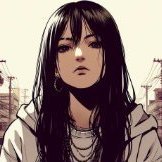Search the Community
Showing results for tags 'japan'.
-
This is the story of Brazil-Native Car Enthusiast by the name of Rafael Silva Rafael Silva was born and raised in São Paulo, Brazil, in a vibrant and diverse neighborhood. From a young age, he developed a passion for cars, initially inspired by the lively automotive culture of his hometown. However, as he delved deeper into the world of cars, his interest began to focus specifically on Japanese automobiles and the unique subcultures surrounding them. Fascinated by the JDM (Japanese Domestic Market) scene, Rafael became enamored with the Bosozoku style, known for its flamboyant and exaggerated modifications. He admired the boldness and creativity of the Bosozoku enthusiasts who transformed their cars into rolling works of art that blended tradition with a rebellious spirit. Driven by his love for Japanese cars and the desire to immerse himself in the heart of the JDM culture, Rafael made the life-changing decision to travel to Japan. There, he found himself surrounded by the very cars and subcultures that had captivated his imagination. He became deeply involved in the local car scene, attending meets, participating in races, and forging connections with fellow enthusiasts. Despite the incredible experiences he had in Japan, Rafael felt a calling to explore more of the global car culture. He decided to set his sights on Los Santos, a city known for its diverse automotive landscape and the hub of countless car enthusiasts. With dreams of integrating his knowledge of JDM culture into the eclectic mix of vehicles in Los Santos, Rafael packed his bags and headed for the city of opportunity. As the story currently concludes in Los Santos, Rafael Silva finds himself navigating the challenges and excitement of a new automotive landscape. Whether he's cruising the streets, participating in car meets, or customizing his own vehicles, Rafael is determined to leave his mark on the Los Santos car scene while staying true to the Bosozoku spirit that initially ignited his passion for cars. The journey continues as he explores the city's diverse car culture, encountering new friends, rivals, and opportunities along the way.
-
- touge
- street racing
- (and 4 more)
-
-
HINAKO'S JAPANESE LANGUAGE SCHOOL 日向子さんの日本語学校 (Hinako-san no nihongo gakko) (( OOC INFO: The purpose of this topic and the ones that will follow is for Factions such as Little Tokyo to be able to use basic Japanese words for adding effect. )) Minasan konnichiwa! Hello, everyone! My name is Hinako and welcome to my online Japanese lessons. Let me tell you a few things about myself first before we get right to the point. I was born and raised in Kyoto (京都), a traditional city of Japan. My passion from an early age was the study of human psychology and behavior, so I dedicated almost half of it to that particular study. Right now I am a Doctor of Philosophy (PhD) majoring in Clinical Psychology, and a Doctor of Medicine (MD) majoring in Psychiatry. The need to start this blog came the second time I found myself in Los Santos. It saddened me when I witnessed that the Japanese-American community no longer spoke my native language, and even emerged into the American culture and linguistic standards. Of course, there is no wrong or right with that. But I am a strong supporter of knowing one's history and language. Hence this blog. With no further due, let's get to the first lesson! The very first thing I want to talk about is the phonetics and writing system. Hiragana (ひらがな), Katana (カタカナ), and Chinese characters, commonly known as Kanji (漢字). In these lessons, however, the writing systems will not be included, unless specifically asked to. The writing system I will be using will be common Latin characters, known in Japan as Romaji. Let's take a look at the Japanese phonetic system. It consists of only five vowels. The rest are just syllables with various combinations of vowels and consonants. Take a look at the charts below to get familiar with the sounds, and how they look like in Hiragana and Katakana. *DO NOT GET INTIMIDATED BY THE COMPLEX WRITING. WE ARE JUST FOCUSING ON THE SOUNDS. Now that we got that out of the way, let's begin with the real lesson. We are going to learn... You guessed it! How to introduce ourselves! In Japanese, the sentence structure is reversed. Meaning, that instead of Subject, Verb, and Object as the usual order that the rest of the normal world has (not), we reverse Verb with Subject.. For example: My name is Hinako. In Japanese, it becomes: My name Hinako is. How do we do that? The word for /am-is-are/ is desu (silent U). The word for /I/ is Watashi (私) for women (and in some formal cases by men), and Ore (俺) or Boku (僕) for men. No (の) in Japanese is a particle that indicates possession. And Wa (は) is a particle that marks the topic of discussion. Although it is written as /Ha/, in that case, it's pronounced like Wa. The Japanese word for /name/ is namae. Easy right? So, how do we say "My name is ..."? The structure is as follows: "X wa Y desu". Remember that formula. My name is Hinako. -> Watashi no namae wa Hinako desu. To be fair, there are a hundred ways to introduce yourself. The most common one is to just say [Your name] and add desu. Example: Hinako desu. I'm sorry if this got a little confusing... for these lessons, I want to avoid as much grammar as possible, so we can focus on the essential stuff. (Greetings, etc) Thank you so much for reading this blog! 読んでくれてありがとう! Yonde kurete arigatou!
-
Introduction. First off - what does "Kanjozoku" mean? When translated from Japanese, it means "loop runners", but if you have no interest into the Japanese car culture, it still doesn't mean much. Honda enthusiasts of Japan have been racing on the Hanshin Expressway, Route 1, more commonly known as the Kanjo loop for more than 3 decades, hence the name Kanjozoku. Kanjozoku is not a one big group of Honda enthusiasts, Kanjozoku is full of rivaling teams that consist of Honda enthusiasts, the most notorious team being "No Good Racing". Kanjozoku teams originally were very secretive of their activities and operating procedures, and still are, just not as much. Kanjozoku teams had a motive for their actions, they're not just some adrenaline junkies, we are talking about Japan here, everything there has a purpose there. Kanjozoku goal was not to let anyone stand in their way, not even law enforcement. Similarly to Bosozoku and Kaido - Kanjozoku wanted to be flashy and attract attention to themselves, and that very easily was achieved with their cosmetic modifications, loud exhausts and high-speed races on the public highway loop, some even went on to make their Honda's to look like Japanese police cars. Kanjozoku vehicles are very easily recognized by their flashy liveries, thick tire lettering, a lot of stickers on the windows and window safety nets. Every part of a car that is being driven by Kanjozoku has it's purpose - if it doesn't, it's j ust unnecessary weight. Then why the safety nets? Current day Kanjozoku will probably say something along the lines of "Uhh well safety, cuz if u crash ur hand may... blah blah blah", to try and gain some moral high ground. An OG will tell you "So the speedcams can't see my face lol". No Kanjozoku cares about how their engine bay looks, if it works - it's good enough. Well, why the Civic? Because it was a cheap, light, agile car that can easily be modified to make a good amount of power, and if quoting an anonymous member of the Kanjozoku - "a Civic gets the job done". Kanjozoku didn't try to keep a low profile and hide from the police, kind of the opposite - if they saw a cop car on the highway, you better believe the cop is going to get "bullied", even today. Some teams even have slogans that signify their rebellious views towards the police - such as "Bye Bye Police!", one team even named themselves "Battle Team Law Break". You might have noticed something in those videos - Kanjozoku have their hazards on, what does it mean? It started as a sign of someone racing among the Touge crowd, but slowly has became into a tradition that all Japanese street racers use when racing. Sadly (gladly to some), the Japanese police have broken down on these Kanjozoku teams, by impounding their cars, massive fines, massive operations and a bunch of other tactics, because of that, most of the Kanjo community either left, or went deep underground. That doesn't mean that Kanjo is dead, it isn't, in the first clip, all three Civics belong to the team "No Good Racing". And finally, The relevance to LS. "That's great an all, but it's in Japan you fucking weeb". Yes, but no. VSauce here. Numerous teams, including the most known one - "No Good Racing", have publicly said that they don't mind foreign imposters, they want them. Unlike other Japanese street racing teams, such as the Mid Night Club, who keep their stickers very private, No Good Racing sells their stickers and say, that by buying a sticker you become an unofficial No Good Racing member. As an unofficial No Good Racing member I can safely say, that this is a pretty good marketing strategy. Although there are no popular Kanjozoku teams in the USA, there are a lot of individual Kanjozoku fans to say the least, some of them even upkeeping the original Kanjozoku morals. We established that there are individual Kanjozoku fans, maybe even self proclaimed members, so what? Well, when there's enough individuals with same interests, groups start forming, with groups - rivalries and so on. Rockstar even made a perfect car for Kanjozoku - the Dinka Blista Kanjo. I mean, look at it! Based on a Civic, has window nets as a modification, can be equipped with tires that have thick lettering and even 3 liveries that are based on the "No Good Racing" liveries, it just screams "Kanjozoku"! The main objective of Kanjozoku is to rival against the government, and with the current political state in the USA, or shall I say with just the political state in the USA, there will always be some people who are opposing the government and like cars.
-
NEWS • Politics Written by Yunisa DELGADO-FLORES • July 3rd, 2022 — 8:10PM Sun rises on Little Tokyo, committee passes bill to recognize district The Designation of Little Tokyo Act, an act that would give the community-dubbed “Little Tokyo” district in South Rockford Drive it’s name officially, passes the senate committee. The Hinomaru, the Japanese Flag, flying high in the morning following the passing. — Alan Kim, July 3rd 2022 On July the 2nd, the committee of public safety of the San Andreas Senate held a hearing regarding the Designation of Little Tokyo Act of 2022; the act that would make the name “Little Tokyo” official. South Rockford Drive, from Invention Court to Dutch London Street, is home to the highest proportion of Japanese migrants and Japanese-Americans within the city of Los Santos. Los Santos County, according to the findings listed in the act, is home to more than 60,000 Japanese residents. The bill, introduced by Senator Adrian Rossi (R), aims to help a community that he described as having “historically suffered” during the hearing. On the west coast, around 110,000 to 120,000 Japanese Americans, which 70 percent of which were born within the U.S., were sent to camps by Executive Order 9066 in 1941. Those who were sent to camps faced economic struggle on release. Japanese-Americans were sent across the country to different camps, where different camps neighbored both wealthy and deprived areas of the country. Many of those who were relocated to these deprived areas found themselves receiving less education opportunities, had worse housing, and earned less money, reported the Harvard Gazette. Those who found themselves relocated to camps located within San Andreas often migrated to Los Santos on their release. Many found themselves moving to the section of South Rockford Drive that is commonly known as Little Tokyo While efforts have been made to rectify and to support the Japanese-American population nationwide following the internment camps, Japanese-Americans and other Asian-Americans face harassment day-to-day. NBC reported how, in 2021, hate crimes against Asians and Asian-Americans increased 339 percent with cities such as Los Santos, San Fierro and New York hitting record highs. Daichi Saejima, the founder and head of the Japanese American Association (JAA), a non-profit that serves to assist Japanese-Americans within Los Santos, described how he and his community faced issues with police harassment in the past in an interview with the Daily News. He expressed his gratitude to this bill passing the committee and hopes it’s a sign of thing to come. “It means our pleas have finally been heard by the higher powers.” Saejima shared in a response to asking about his opinions on the bill. “We've wanted change, and finally, after our trials and tribulations, we're making steady progress. Us as the Japanese-Americans, we're being treated as equals. Given the rights and acknowledgement we deserve.” During the hearing, Sen Tsujihara and Ian Ichiro Inoue, the niece and nephew of Saejima and fellow members of the JAA, were present as witnesses during the hearing. Tsujihara testified to the struggles Japanese-Americans face in the present day, noting a “systemic oppression” that their community faces and how Little Tokyo and the JAA serves as a hub for support. “Before the internment in the forties, our Japantown was the most prosperous of its kind anywhere in the country.” Inoue said in regards to Little Tokyo and it’s past. “Despite our struggles that we've faced in the years following executive orders and other such issues, Little Tokyo provides not only a vast spread of amenities in the way of corner stores, apartment housing, and any such need that a new family could possibly hope for.” “Formal recognition of our historic district would pave the way to ending the decades long damage done.”, Tsujihara said in the hearing. Senator Kaoru King-Yagami (D), who originally came from Japan, expressed their support for the bill by stating “I hope my heritage, and that of all Japanese-Americans may be able to be proudly displayed into the future with this act.” The bill passed the committee hearing unanimously with Senators Lu (D), Jones (D), Meier (D) and Benson (R) not being present. It now will face a hearing from the senate as a whole, where they will vote to pass it into law. Comments are enabled: Username: Comment:
- 1 reply
-
- 8
-

-

-
- politics
- little tokyo
- (and 5 more)

















